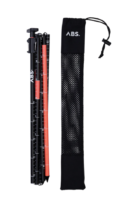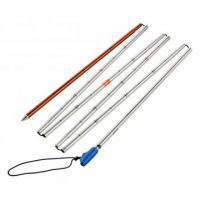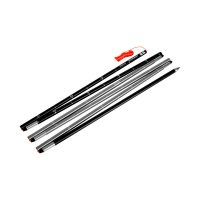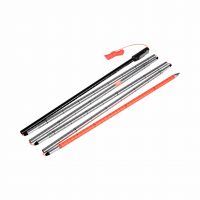 Online Since 2001
Online Since 2001
 Online Chat
Online Chat
 Order Before 1pm, DPD Next Day Delivery
Order Before 1pm, DPD Next Day Delivery
 Online Since 2001
Online Since 2001
 Online Chat
Online Chat
 Order Before 1pm, DPD Next Day Delivery
Order Before 1pm, DPD Next Day Delivery
We provide the full range of Avalanche Probes from leading avalanche safety brands, please see the full range and models we provide at Snowsafe :
240 Alu | 240 PFA | 240 Alu Light | Carbon 240 Super Light | Carbon 280+ PFA | Steel 320+ | 320+ Alu PFA
240 Probe | 240 Quick-Lock | 320 Quick-Lock
Probe 240 | 240 Fast Lock | 240 Speed Lock | 320 Speed Lock
Ortovox Probe Buying Guide & Comparison | Ortovox Probe Material Glossary
Avalanche probes are used to determine where your companion’s body is located under the snow, therefore its important that quick access to your Probe is vital, you should be able to access your avalanche probe via the inside or outside of your avy backpack. All probes we sell offer a quickly assemble function, this will help you dig out the victim with your Avalanche Shovel once you have located the buried victim with your Avalanche Transceiver.




While avalanche probes are sometimes a little overlooked, they are a crucial part of the avalanche rescue kit consisting of shovel, probe and transceiver. Tests show that searches performed without a probe i.e. with just a transceiver and shovel, are considerably slower.
The probe is used to mark the exact location of the body. When your transceiver leads you to the spot where there is the least distance between you and the victim, then you begin to probe the area. The best technique is to probe the area in ever increasing circles, making each probe around half a metre apart. When the victim is located, the probe should be left in the snow as a marker. The depth of the victim needs to be taken into account as this will determine where you should start digging and let you know how far to dig down. Remember to probe at 90 degrees to the slope.
When it comes to buying a probe there are a few main criteria to look for - the material, the weight, the length, and the assembly function. Most modern probes assemble very quickly and easily - you simply toss the probe up and pull a cord that tightens and locks the probe in place. The PFA system on many of the Ortovox probes is especially fast and simple.
The length is an important feature. Generally, a probe over 200cm is sufficient for non-professionals. However, burials beyond this depth do happen, although the survival chances are slimmer.
The material is important. Both the carbon and aluminium probes are strong and unbreakable. The carbon models are, however, significantly lighter. Steel probes are the most durable and are often favoured by avalanche professionals who use them frequently, but they are heavy.
We also highly recommend carrying a Recco Reflector for extra added protection
Avalanche probes are used in conjunction with your transceiver to pinpoint the exact position of a person buried under the snow by probing the area the transceiver leads you to until you make contact with the body. Probes can then be left in the snow as a marker once the body has been found.
All our probes are quick assembly — simply shake and throw out the folded segments, while pulling the cord at the top of the probe in order to fix in place. After this, stick the probe into the snow in ever increasing circles, roughly half a metre apart each time. Probe the ground at 90-degree angles to the slope until you make contact with the buried victim. Once you have, leave the probe in the ground to pinpoint the location and start digging. It is important to practise probing techniques regularly and make frequent checks on assembly mechanism in case of accidental damage.
Probes can either be made of carbon, aluminium or steel. Carbon is a non-metal, lightweight, extremely strong and durable material. Aluminium and carbon probes are both durable and built to withstand the freezing conditions without breaking or bending, giving you an accurate reading. While steel is the most durable, carbon probes are the lightest and easiest to carry. Steel probes, although relatively heavy, tend to be favoured by professionals.
For non-professional use, a 200cm probe should be sufficient. The average depth of burial is a metre. People can be buried at deeper levels than this, necessitating a longer probe. Longer probes may be required by professionals, therefore. The survival rates drop if a person gets buried at greater depths. Some of the different lengths of probes available are 220 cm, 240 cm, 260 cm, 265 cm and 300 cm.
The probes can be disassembled and folded up and will then fit in your backpack easily in a pocket. Most avy backpacks have an indicated shovel and probe pockets to hold the probe, we highly recommend Ortovox Cross Rider 22 from the Ortovox Backpacks.
Total - £0.00
Checkout